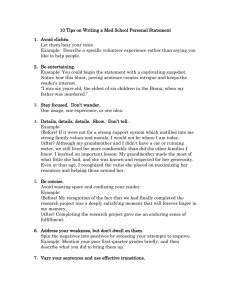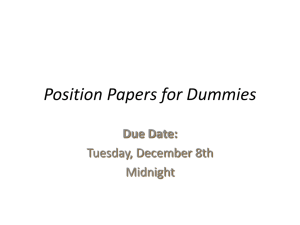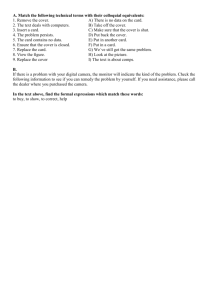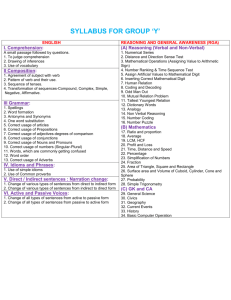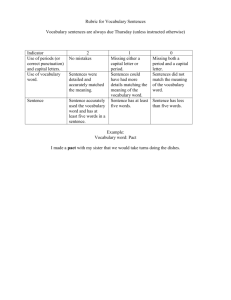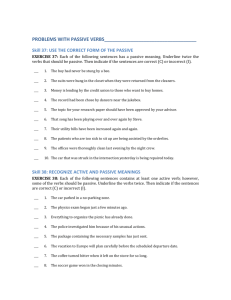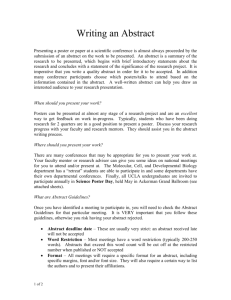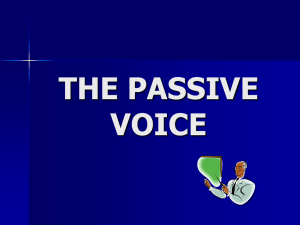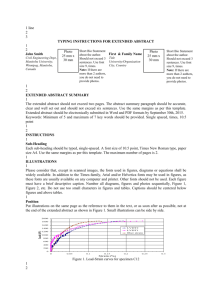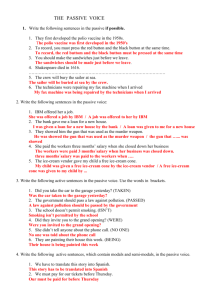Rules of Formal Writing
advertisement
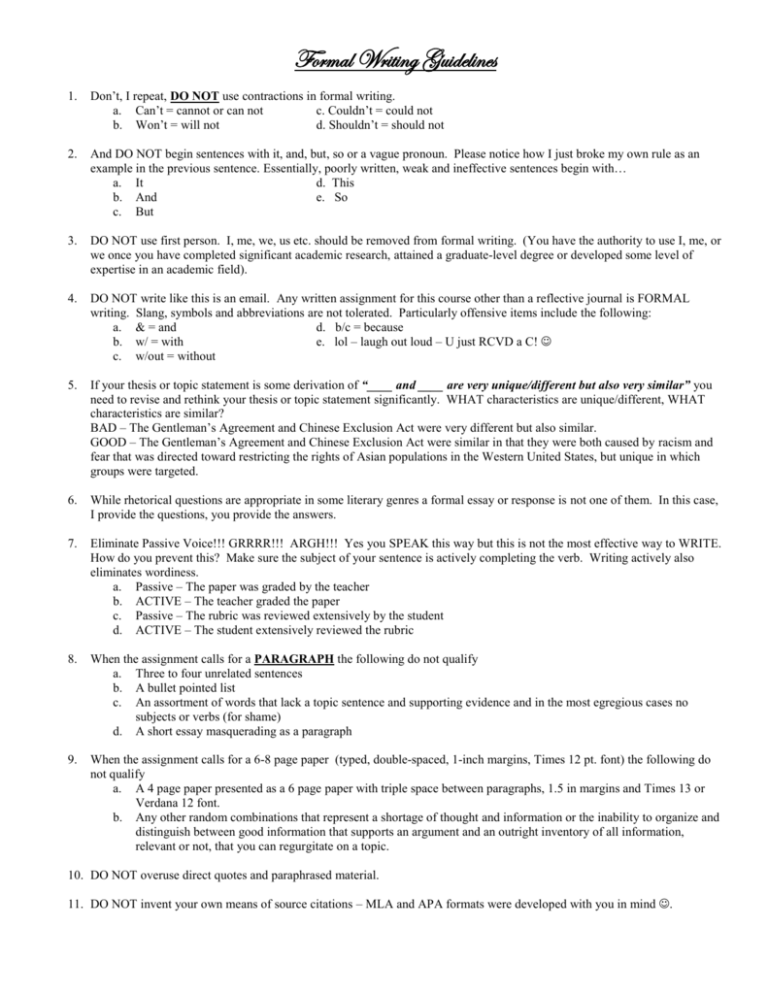
Formal Writing Guidelines 1. Don’t, I repeat, DO NOT use contractions in formal writing. a. Can’t = cannot or can not c. Couldn’t = could not b. Won’t = will not d. Shouldn’t = should not 2. And DO NOT begin sentences with it, and, but, so or a vague pronoun. Please notice how I just broke my own rule as an example in the previous sentence. Essentially, poorly written, weak and ineffective sentences begin with… a. It d. This b. And e. So c. But 3. DO NOT use first person. I, me, we, us etc. should be removed from formal writing. (You have the authority to use I, me, or we once you have completed significant academic research, attained a graduate-level degree or developed some level of expertise in an academic field). 4. DO NOT write like this is an email. Any written assignment for this course other than a reflective journal is FORMAL writing. Slang, symbols and abbreviations are not tolerated. Particularly offensive items include the following: a. & = and d. b/c = because b. w/ = with e. lol – laugh out loud – U just RCVD a C! c. w/out = without 5. If your thesis or topic statement is some derivation of “____ and ____ are very unique/different but also very similar” you need to revise and rethink your thesis or topic statement significantly. WHAT characteristics are unique/different, WHAT characteristics are similar? BAD – The Gentleman’s Agreement and Chinese Exclusion Act were very different but also similar. GOOD – The Gentleman’s Agreement and Chinese Exclusion Act were similar in that they were both caused by racism and fear that was directed toward restricting the rights of Asian populations in the Western United States, but unique in which groups were targeted. 6. While rhetorical questions are appropriate in some literary genres a formal essay or response is not one of them. In this case, I provide the questions, you provide the answers. 7. Eliminate Passive Voice!!! GRRRR!!! ARGH!!! Yes you SPEAK this way but this is not the most effective way to WRITE. How do you prevent this? Make sure the subject of your sentence is actively completing the verb. Writing actively also eliminates wordiness. a. Passive – The paper was graded by the teacher b. ACTIVE – The teacher graded the paper c. Passive – The rubric was reviewed extensively by the student d. ACTIVE – The student extensively reviewed the rubric 8. When the assignment calls for a PARAGRAPH the following do not qualify a. Three to four unrelated sentences b. A bullet pointed list c. An assortment of words that lack a topic sentence and supporting evidence and in the most egregious cases no subjects or verbs (for shame) d. A short essay masquerading as a paragraph 9. When the assignment calls for a 6-8 page paper (typed, double-spaced, 1-inch margins, Times 12 pt. font) the following do not qualify a. A 4 page paper presented as a 6 page paper with triple space between paragraphs, 1.5 in margins and Times 13 or Verdana 12 font. b. Any other random combinations that represent a shortage of thought and information or the inability to organize and distinguish between good information that supports an argument and an outright inventory of all information, relevant or not, that you can regurgitate on a topic. 10. DO NOT overuse direct quotes and paraphrased material. 11. DO NOT invent your own means of source citations – MLA and APA formats were developed with you in mind .
